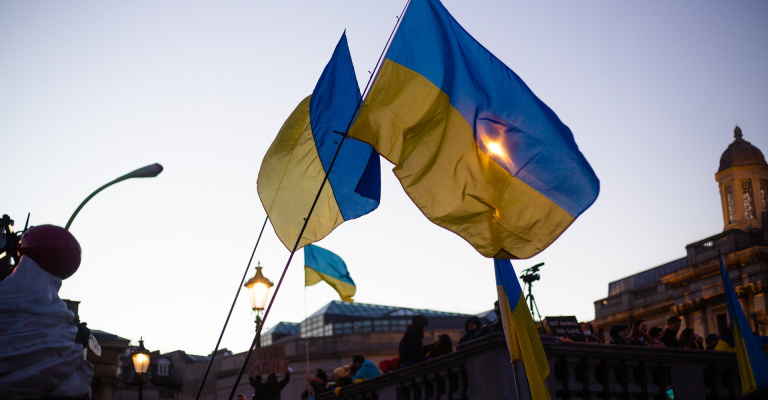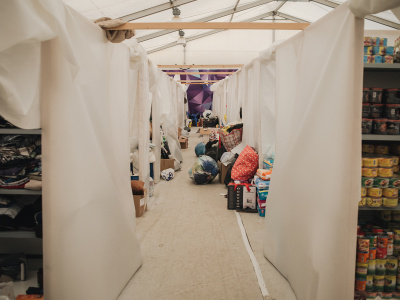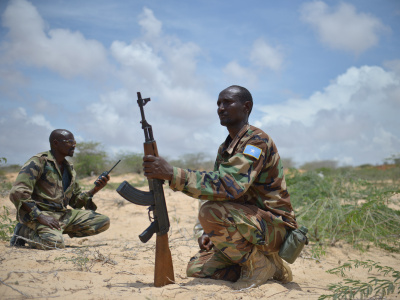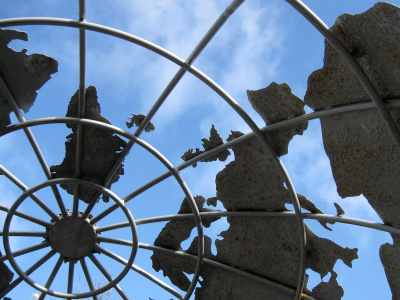
The European Peace Facility and Ukraine: Implications for Africa-Europe relations
The mobilisation of the European Peace Facility (EPF) in support of Ukrainian armed forces against Russia’s invasion marks a radical paradigm shift for EU foreign policy. The title ‘Peace Facility’ might appear misleading, as the instrument is used for the first time ever to fund lethal weapons and to ship them into a war zone.
The news from Ukraine is horrific and sobering. But EU support to Ukraine should not come at the expense of cooperation with Africa on peace and security. This issue is not mentioned in the declaration of the informal EU leaders meeting on Ukraine in Versailles on 10 and 11 March. Yet, if not addressed properly, it could add another layer of frustration to the already strained relations between Africa and Europe.
First-ever EU funding of lethal weapons
On Sunday 27 February 2022, four days after Russia’s invasion of Ukraine, European Commission president Ursula von der Leyen and Joseph Borrell, EU foreign policy chief and head of the European External Action Service (EEAS), announced a further sanctioning of Russia, as well as an emergency package in support of the Ukrainian armed forces, including the provision of lethal weapons. This ended a taboo for the EU, as Borrell mentioned in his statement.
The emergency package in support of Ukrainian forces consists of €450 million for lethal weapons and €50 million for complementary support, such as medical supplies. Already in November 2021, the EU decided to provide €31 million worth of medical equipment, mobility and cyber defence to Ukraine, funded via the EPF.
During the Versailles meeting, Borrell prematurely announced that an additional €500 million would be mobilised via the EPF in support of the Ukrainian armed forces, although this statement did not make it into the Versailles declaration. It only mentions that Ukrainian partners “will be supported through all available instruments, including through an increased use of the European Peace Facility”. Views among EU member states differ on the issue. German chancellor Olaf Scholz commented that nobody thought this was a bad idea and that the EU would need to further discuss this question. Dutch prime minister Mark Rutte bluntly said that a doubling of the EPF budget had not been part of the discussions.
A bit of background
The EPF, a so-called off-budget financing instrument formally established in March 2021 by the EU’s Foreign Affairs Council, is a €5.6 billion fund to be spent on support to conflict management and international security over a seven-year period. The fund is off-budget because the EU’s legal base prohibits the use of its regular multiannual budget for activities of a military nature.
The provision of material is coordinated by the EEAS and provided by one or more EU member state(s), which then send(s) the bill to the EU for payment. For 2022, the EU had originally planned to spend €540 million on various peace and security operations, mainly in Africa. Commitments were made to further fund stipends of soldiers of the African peace support operation in Somalia (AMISOM), other African engagements such as the Multinational Joint Task Force (MNJTF) against Boko Haram in the Lake Chad region, and EU military and civilian Common Security and Defence Policy (CSDP) missions and operations. One of them is the mission to train soldiers of the Mozambican army, which was decided on in October 2021.
€5.6 billion seems like a lot of money, but given the many engagements that need to be funded through the EPF, and considering the price for (sophisticated) lethal weapons, the scope of activities resourced via the EPF is limited. The EU’s decision to use this instrument, beyond the military material that various EU and Western countries have sent to Ukraine bilaterally, is therefore first and foremost a political act. It shows that the EU is ready to act as one, and that it’s not only acting politically and applying sanctions, but is able – albeit with comparatively limited means – to finance weapons.
The EPF’s origins are twofold. First, it is a result of the ambitious EU’s Global Strategy from 2016 and the preceding policy discourse between the EU and its member states on making the EU a global player, rather than only being a global payer. Second, it builds on the EU’s experiences with the African Peace Facility (APF) – the predecessor of the EPF – and integrates the former support provided via the APF, including EU funding provided for African peace support operations, channelled through the AU. Between 2004 and 2020, a total of €2.7 billion was provided to the AU via the APF. The majority was used to pay AMISOM stipends.
Implications for funding for stabilisation in Africa
Contrary to the APF, the EPF allows the financing of lethal weapons – for the first time ever in the history of the EU. What is also new is its global reach, as the APF was obviously meant for Africa only. When the EPF was established, this brought up questions on possible competition between peace and security priorities in Africa and similar priorities in other parts of the world, and on who would decide on these. The EU’s decision to support Ukrainian forces with lethal weapons, funded via the EPF, puts this question squarely on the table today.
The EU has always shown long-term commitment in its cooperation with partners and assured the AU and selected African states it would use the EPF in support of African peace and security priorities, though not exclusively. But with a rapidly and dramatically changing security landscape at the EU’s borders, the assistance is under high pressure. EU security priorities are likely to change, or will be adapted at the very least.
With nearly all funds for 2022 spent on Ukraine (some 10% of the total EPF budget for the seven-year period), EU member states are confronted with difficult questions on how to finance the EPF over the next few years and whether all EPF financing commitments made before the Russian invasion of Ukraine can be fulfilled.
At present, various financing options are on the table. One is the front-loading option, which means using EPF resources that had been earmarked for spending after 2022. Additional EPF funding – the topping-up option – was discussed in Versailles last week, but only mentioned in relation to supporting the Ukrainian armed forces. An answer to this need for additional funding for peace and security in Africa will indicate to what extent the joint EU member states’ financing of EU security – the so-called communitisation of EU security and external action – will be further shaped beyond its immediate neighbourhood, and lead to a ‘geopolitical Europe’, as Borrell enthusiastically put it.
EU-Africa cooperation on peace and security should not be questioned
Contrary to past practice under the APF, EPF funding can be provided to African states directly, in parallel to cooperation with the AU, or to any other conflict environment globally. Informal exchanges between the EU and the AU on priorities to be addressed do take place, but there is no formal mechanism anymore to ensure that the EU’s priorities are set exclusively in consultation with the AU. There is also no mechanism to earmark funds for Africa in the EPF budget, unlike in other EU external funding instruments.
This loss of a mutual and formal agreement mechanism is regrettable, since the EU and the AU have continuously stressed the importance of working in partnership. The latest statement in this regard was made just a few days before the Russian invasion of Ukraine, during the EU-AU Summit on 17 and 18 February 2022 in Brussels. Among a range of agreements, the final declaration for the summit concluded with a strong commitment to “renew and enhance cooperation for peace and security”. Indeed, peace and security has long been one of the most functional and appreciated areas of cooperation between Europe and Africa.
African policymakers will surely be sensitive to these new developments in Europe and realise that EU funding opportunities can’t be taken for granted forever in a rapidly changing geopolitical context. A message that Africa needs to take more responsibility for its own security was already brought home in 2017, when the EU announced cuts to stipends for the AMISOM operation. Intense discussions and negotiations have been ongoing since 2018 to increase African funding for peace and security under the lead of Rwanda’s one-year chairmanship of the AU, but this process has been tedious and far from complete.
We can expect that enhanced pressure from the EU, but also from other international actors, will be noted in the near future to increase this funding and to revive the negotiations for securing funding from the UN-assessed contributions. AU and African states will insist, however, that funding peace and security is a global responsibility. Without international support and UN-assessed contributions, in addition to increased self-financing, it will be difficult to uphold current African and international engagements for peace and security in Africa. Against the backdrop of terrible pictures arriving from Ukraine, headlines on African conflict atrocities are currently disappearing in European media.
With the conflict at the EU’s borders and shifting peace and security priorities in Europe, this should not come as a surprise. But commitments on peace and security made at the EU-AU Summit in February this year should not be thrown overboard. Otherwise, relations between Africa and Europe might be further strained.
Nearly 50% of African states decided to abstain or to not vote on the UN General Assembly resolution to end the Russian military operations in Ukraine. This was informed by deep frustrations about European – and more broadly, Western – behaviour related to a multitude of issues, including migration and the (financing) of COVID vaccines. The EU and its member states need to ensure that issues on peace and security do not put additional pressure on this relationship.
The views are those of the author and not necessarily those of ECDPM.




